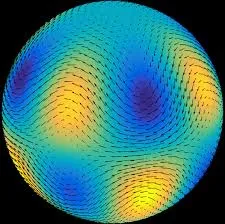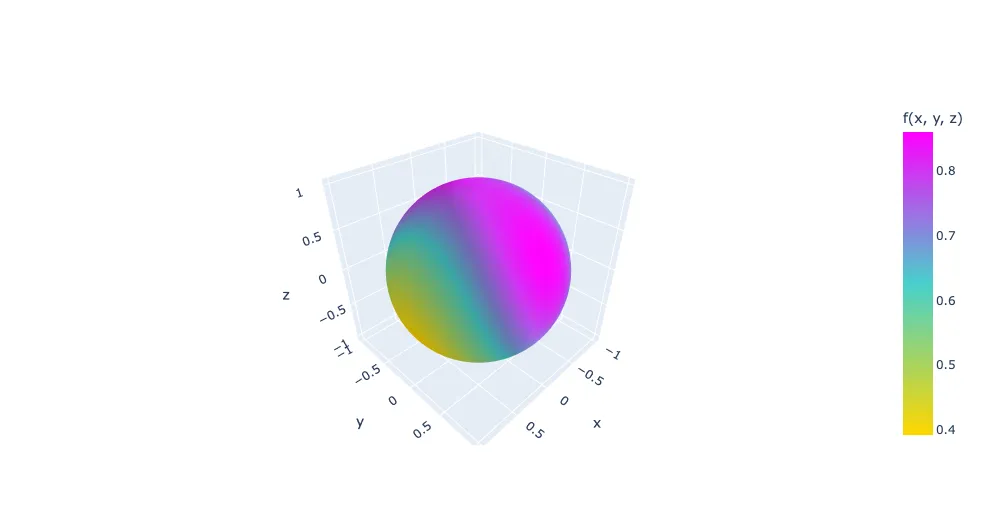我想绘制一个实值函数
我会想象/期望/喜欢一个像这样的可视化。 此外,我还以闭合形式计算了
f(x,y,z)=a,其中 (x,y,z) 是球体上的一个三维点,a 是一个实数。我按照以下方式计算球面上点的笛卡尔坐标,但是我不知道如何在每个点上可视化 f 的值。import plotly.graph_objects as go
import numpy as np
fig = go.Figure(layout=go.Layout(title=go.layout.Title(text=title), hovermode=False))
# Create mesh grid for spherical coordinates
phi, theta = np.mgrid[0.0:np.pi:100j, 0.0:2.0 * np.pi:100j]
# Get Cartesian mesh grid
x = np.sin(phi) * np.cos(theta)
y = np.sin(phi) * np.sin(theta)
z = np.cos(phi)
# Plot sphere surface
self.fig.add_surface(x=x, y=y, z=z, opacity=0.35)
fig.show()
我会想象/期望/喜欢一个像这样的可视化。 此外,我还以闭合形式计算了
f的梯度(即对于每个(x,y,z),我都计算了f的三维梯度)。是否有一种类似于上图所示的绘制此向量场的方法?

